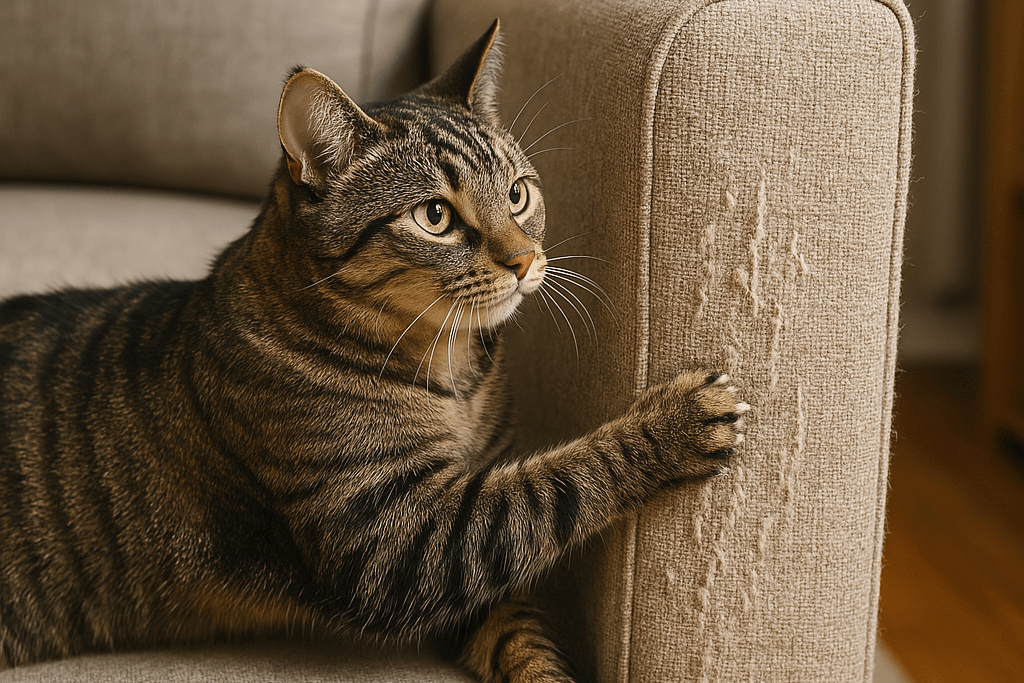Practical Strategies to Correct Bad Cat Behavior

Cats are often recognized for their independent and enigmatic nature. While they can be affectionate companions, they may also exhibit behaviors that are undesirable to their owners. Understanding why your cat behaves a certain way and addressing the root cause can help correct the behavior effectively. In this guide, we will explore how to appropriately handle bad cat behavior using positive reinforcement, environmental adjustments, and proper training techniques.
Table of Contents
Understanding Cat Behavior: The Key to Correction
Before correcting a cat’s behavior, it’s essential to understand why they act out. Some common reasons include:
- Territorial instincts – Cats may scratch furniture, spray, or act aggressively to mark their territory.
- Boredom or lack of stimulation – A cat that is not mentally or physically stimulated might engage in destructive behavior.
- Medical issues – Sudden changes in behavior can sometimes indicate health problems.
- Fear or stress – New environments, unfamiliar people, or loud noises can make cats act defensively or hide excessively.
- Learned behavior – If a cat receives attention (even negative attention) for a certain behavior, they may repeat it.
By identifying the root cause, you can take appropriate steps to correct the behavior instead of simply punishing the cat.
Common Bad Cat Behaviors and How to Address Them
1. Scratching Furniture
Scratching is a natural feline instinct that helps cats mark their territory and maintain healthy claws. Instead of punishing your cat for scratching furniture:
- Provide multiple scratching posts in different locations.
- Use deterrents such as double-sided tape on furniture.
- Reward your cat with treats when they use the scratching post.
- Keep their nails trimmed to minimize damage.
2. Aggression Toward People or Other Pets
Aggression in cats can be caused by fear, overstimulation, or territorial instincts. To manage aggression:
- Avoid physical punishment, as it can increase aggression.
- Observe what triggers the aggression and remove or modify the cause.
- Allow your cat to have personal space when they seem overstimulated.
- Use calming products such as pheromone diffusers.
- Engage in daily interactive play to help your cat release pent-up energy.
3. Litter Box Avoidance
If your cat suddenly stops using the litter box, consider the following solutions:
- Make sure the litter box is kept clean and placed in a quiet, easily accessible spot.
- Avoid drastic changes in litter type or box placement.
- Provide multiple litter boxes in multi-cat households.
- Consult a veterinarian to rule out any potential medical conditions.
4. Excessive Meowing or Nighttime Activity
Cats may vocalize excessively for attention, hunger, or medical reasons. To reduce excessive meowing:
- Stick to a consistent feeding schedule.
- Ensure your cat has plenty of play and stimulation during the day.
- Avoid responding to meowing for attention; reinforce quiet behavior instead.
- Rule out any medical conditions that may be causing discomfort.
5. Jumping on Counters and Tables
Cats love climbing, but if you want to discourage counter-jumping:
- Provide alternative climbing areas like cat trees.
- Use motion-activated deterrents or double-sided tape on counters.
- Keep counters free of food and other attractants.
- Reward and praise your cat for using appropriate climbing spots.
Positive Reinforcement: The Best Approach
Cats thrive on positive reinforcement rather than punishment. Negative reinforcement can make a cat fearful and worsen behavioral issues. Instead:
- Reinforce good behavior with treats, praise, or interactive play.
- Redirect bad behavior to an acceptable activity.
- Be patient and consistent—cats learn through repetition and routine.
When to Seek Professional Help
If your cat’s behavior does not improve despite your efforts, it may be time to seek professional help. Consult a veterinarian to rule out medical causes or work with a feline behaviorist for specialized training techniques.
Final Thoughts
Handling bad cat behavior requires patience, understanding, and a proactive approach. By identifying the root causes, providing appropriate alternatives, and using positive reinforcement, you can successfully guide your cat toward better habits. With consistency and care, your feline friend will learn to behave appropriately while maintaining a strong bond with you.
By implementing these strategies, you’ll create a happier environment for both you and your cat while ensuring their well-being.
